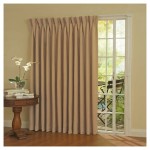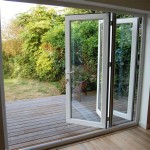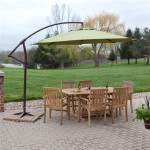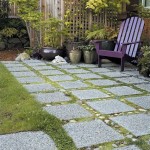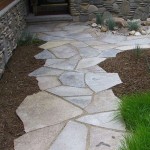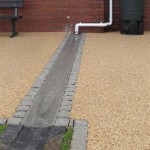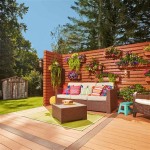What is the Best Material for an Outdoor Patio Cover?
Selecting the most appropriate material for an outdoor patio cover requires careful consideration of several factors, including durability, aesthetics, cost, maintenance requirements, and the specific climate conditions of the location. A patio cover provides shade, protection from the elements, and a defined outdoor living space, enhancing the functionality and value of a property. The ideal material will effectively address these needs while complementing the architectural style of the home and remaining within budget.
Various materials are available for constructing patio covers, each possessing unique characteristics and benefits. Common options include wood, metal (aluminum and steel), fabric, polycarbonate, and vinyl. The ultimate choice depends on a balance of practical considerations and personal preferences.
Durability and Longevity
The long-term performance of a patio cover hinges on its ability to withstand exposure to weather conditions, including sunlight, rain, wind, snow, and temperature fluctuations. The material chosen must be resistant to degradation, corrosion, and structural damage to ensure a prolonged lifespan and minimize the need for frequent repairs or replacements.
Wood, while aesthetically pleasing, is susceptible to rot, insect infestation, and weathering if not properly treated and maintained. Regular sealing, staining, or painting is essential to protect wood patio covers from moisture and UV damage. Certain types of wood, such as redwood and cedar, possess natural resistance to decay, but they tend to be more expensive than other options.
Metal, particularly aluminum and steel, offers superior durability compared to wood. Aluminum is lightweight, rust-resistant, and requires minimal maintenance. Powder-coated aluminum provides enhanced protection against corrosion and fading. Steel, while stronger than aluminum, is prone to rust and requires a protective coating to prevent deterioration. Galvanized steel, which is coated with zinc, offers increased resistance to corrosion.
Fabric patio covers, typically made from canvas or synthetic materials, provide shade and can be easily retracted or removed. However, fabric is susceptible to tearing, fading, and mildew growth. The lifespan of a fabric patio cover depends on the quality of the material and the level of exposure to the elements. Regular cleaning and occasional repairs may be necessary to maintain its appearance and functionality.
Polycarbonate is a lightweight, impact-resistant plastic that offers good light transmission and weather protection. It is available in various thicknesses and opacities, allowing for customized levels of shade and light filtering. Polycarbonate is relatively easy to install and requires minimal maintenance. However, it can be susceptible to scratching and discoloration over time.
Vinyl is a durable, low-maintenance plastic that is resistant to rot, insects, and weathering. Vinyl patio covers are available in a variety of colors and styles, and they typically require only occasional cleaning. However, vinyl can become brittle in cold temperatures and may be prone to fading in direct sunlight.
Aesthetics and Design
The visual appeal of a patio cover is an important consideration, as it should complement the architectural style of the home and enhance the overall outdoor living space. The material chosen should align with the homeowner's aesthetic preferences and create a cohesive and inviting atmosphere.
Wood offers a natural, warm, and inviting aesthetic that blends well with various architectural styles. It can be stained or painted to match the existing color scheme of the home. Wood patio covers can be customized with intricate designs and decorative elements to create a unique and personalized look.
Metal patio covers offer a sleek, modern, and industrial aesthetic. Aluminum and steel can be shaped into various forms and finished with different colors and textures. Metal patio covers are often used in contemporary homes and commercial settings.
Fabric patio covers provide a soft, elegant, and versatile aesthetic. They are available in a wide range of colors, patterns, and textures, allowing for customized designs. Fabric patio covers can be easily changed or updated to reflect seasonal trends or personal preferences.
Polycarbonate patio covers offer a clean, modern, and functional aesthetic. They are available in clear, translucent, and opaque options, allowing for customized levels of light transmission. Polycarbonate patio covers are often used in minimalist or contemporary homes.
Vinyl patio covers offer a traditional, classic, and low-maintenance aesthetic. They are available in a variety of colors and styles, mimicking the look of wood without the need for painting or staining. Vinyl patio covers are often used in suburban homes and residential settings.
Cost and Maintenance
The overall cost of a patio cover includes the material costs, labor costs for installation, and ongoing maintenance expenses. The material chosen should be within the homeowner's budget and offer a reasonable balance between upfront investment and long-term maintenance requirements.
Wood patio covers tend to be relatively expensive, especially if using premium wood species like redwood or cedar. The cost of wood patio covers also includes the expenses for sealing, staining, or painting. Regular maintenance is required to prevent rot, insect infestation, and weathering.
Aluminum patio covers are generally more affordable than wood patio covers. They require minimal maintenance, as aluminum is rust-resistant and does not need to be painted or stained. The cost of aluminum patio covers may vary depending on the thickness of the material and the complexity of the design.
Steel patio covers can be relatively inexpensive, but they require a protective coating to prevent rust and corrosion. The cost of steel patio covers includes the expenses for galvanizing or powder coating. Regular maintenance is required to inspect and repair any damage to the protective coating.
Fabric patio covers are typically the least expensive option, especially if using standard canvas or synthetic materials. However, the lifespan of fabric patio covers is shorter than other materials, and they may require more frequent repairs or replacements. Regular cleaning is necessary to prevent mildew growth and maintain their appearance.
Polycarbonate patio covers offer a mid-range cost option. They are relatively easy to install and require minimal maintenance. The cost of polycarbonate patio covers may vary depending on the thickness of the material and the level of light transmission.
Vinyl patio covers also offer a mid-range cost option. They are durable, low-maintenance, and resistant to rot, insects, and weathering. The cost of vinyl patio covers may vary depending on the style and color chosen.
In choosing the optimal patio cover material, homeowners must diligently weigh the trade-offs between durability, aesthetics, cost, and maintenance requirements. The specific climate and environmental conditions of the area heavily influence the optimal choice. For example, humid climates may necessitate materials resilient to mold and rot whereas particularly sunny environments may prioritize UV resistance. Prioritizing these considerations will ensure the selected material provides long term value and enhances the usability and enjoyment of the outdoor living space.

36 Patio Cover Ideas That Make Outdoor Living A Breeze Architectural Digest

Patio Cover Ideas The Home Depot

Most Common Sizes Of Patio Covers Azenco Outdoor

What S The Best Patio Cover Material Valley Patios

Patio Cover Ideas The Home Depot

Top 8 Popular Roof Materials For Modern Pergola Lida Outdoor

Shingled Or Metal Roofs Choosing The Best Material For Your Patio Cover

Which Material Is Best For Roofing Patios

Most Common Sizes Of Patio Covers Azenco Outdoor

Discover The Best Patio Cover Material For Your Outdoor Space
Related Posts

